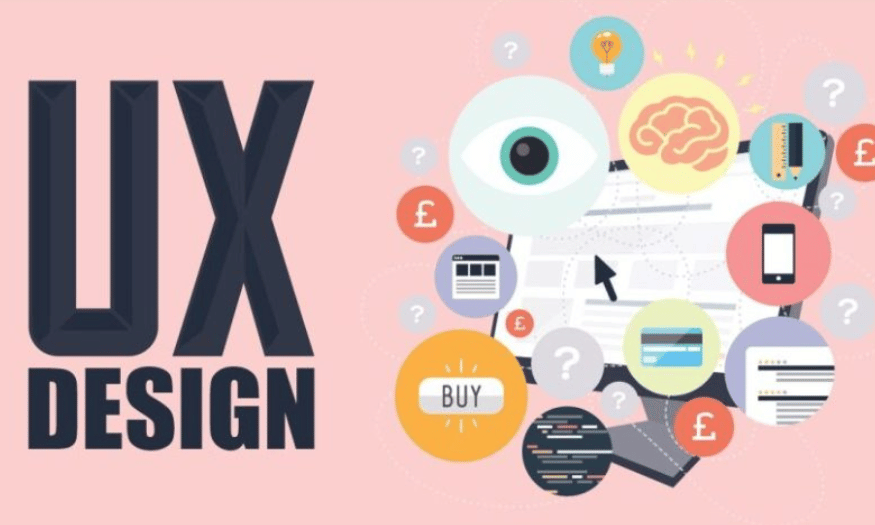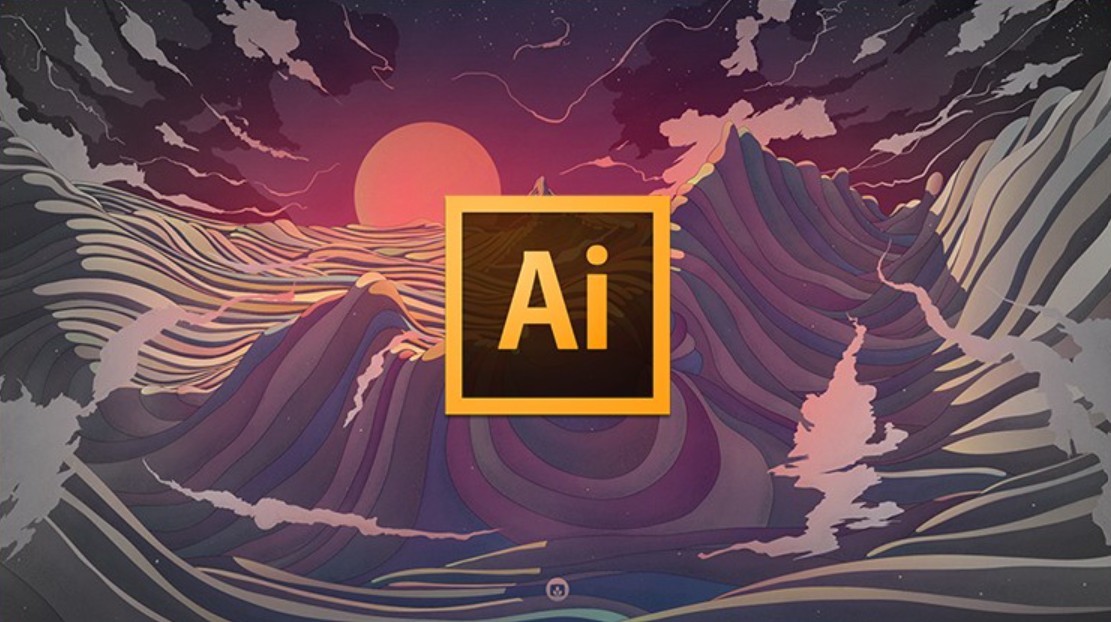Best Selling Products
Top 10 Hottest UX Design Trends For Mobile Today
Nội dung
- 1. The rise of super apps
- 2. Video Interaction
- 3. 3D graphics with each function
- 4. Eliminate misinformation and fake news
- 5. Voice-based virtual assistant
- 6. Focus on cross-platform app optimization
- 7. Useful data visualization
- 8. Subtle neomorphic trend
- 9. The Next Generation of Augmented Reality Apps
- 10. Data Security and Privacy
- 11. Conclusion
In today's digital age, user experience (UX) design has become an extremely important factor in mobile application development. UX is not simply about creating a beautiful interface but also the process of optimizing the interaction between users and products. A good UX design helps users easily find information, complete tasks and have positive experiences, thereby increasing satisfaction and loyalty to the brand. Let's take a look at the most popular UX design trends today with Sadesign.

In today's digital age, user experience (UX) design has become an extremely important factor in mobile application development. UX is not simply about creating a beautiful interface but also the process of optimizing the interaction between users and products. A good UX design helps users easily find information, complete tasks and have positive experiences, thereby increasing satisfaction and loyalty to the brand. Let's take a look at the most popular UX design trends today with Sadesign .
1. The rise of super apps
Over the past two decades, the mobile app development model has remained largely unchanged, with each app serving a single purpose. However, recently, the industry has seen a major shift towards the super app model – where one app is capable of performing multiple functions. A super app is not just a multi-purpose app, but a complete ecosystem that helps users fulfill all their needs within a single platform. This not only saves users time but also creates opportunities for businesses to retain customers for longer.
Standing out among the super apps today is WeChat, a Chinese app that integrates messaging, social media, and payments. WeChat has reshaped the way users interact with technology, making it an integral part of everyday life. The convenience of WeChat has revolutionized the way users access services and information.
In Indonesia, Gojek is also a prime example of the success of the super app model. This application not only provides transportation services but also expands into areas such as food delivery, payments and logistics. Gojek's popularity has proven that users are increasingly looking for more comprehensive solutions, and this poses a great challenge for UX designers to create a smooth and intuitive user experience.
.png)
2. Video Interaction
The Covid-19 pandemic has completely changed the way we communicate and work. In the context of "Stay home, stay safe", online meeting tools have become essential applications. In 2021, the trend of integrating video interactions into applications has started to explode. From remote medical consultation to video shopping, we will see a strong development of these features.
Many people have realized that direct video communication can help solve problems quickly without having to meet in person. This feature is especially important in the medical field. Consulting with a doctor via video not only saves time but also brings a sense of security to the patient. This has opened a new direction for medical applications, creating a closer connection between doctors and patients.
In the e-commerce space, video shopping has become a new trend, allowing retailers to interact directly with customers. The DROPD app is a prime example, combining online shopping with live videos from influencers. This not only creates an enjoyable shopping experience but also helps consumers feel more confident when making purchasing decisions.
3. 3D graphics with each function
While 3D design has been present in many apps and websites for a long time, its role is changing dramatically. Today, 3D objects are not only used for decoration but also serve a clear function in the user experience. Mobile programming technology is evolving, opening up opportunities for integrating more complex graphic effects, making 3D graphics a central part of the mobile experience.
One of the typical applications of 3D graphics is in the field of e-commerce. The integration of 360-degree views of products allows consumers to have a better idea of what they are buying. Not only does it create visual appeal, 3D graphics also enhance user interaction, making it easier for them to explore and interact with the product.
Furthermore, 3D graphics can also be used to improve interactive performance. For example, a 3D model of a car allows users to interact to adjust settings, providing a more realistic and immersive experience. The combination of functionality and aesthetics in 3D design promises to bring unique and innovative mobile experiences to users in the future.
.png)
4. Eliminate misinformation and fake news
The 21st century has seen an explosion of information, but at the same time, it has also posed a major challenge in determining the truth. In 2020, misinformation and fake news have become a serious problem, especially on social media platforms. Users are constantly exposed to misleading content, presented in a way that is easy to believe. In this context, verifying the truth has become more difficult than ever, especially when users often use mobile devices without having time to check the source of information.
For this reason, media platforms like Twitter have had to find a solution. They have applied algorithms to analyze content and hide potentially misleading information. This not only helps users access more accurate information but also increases the responsibility of the platforms to provide reliable information.
This trend goes beyond information control and opens up opportunities for UX designers to develop tools that support users in authenticating information. Smart applications that can help users identify fake information will become an important part of design strategies, contributing to creating a safer and more trustworthy information environment.
5. Voice-based virtual assistant
While voice-based virtual assistants have been around for a while, they’re still evolving. Technologies like Apple Siri, Google Assistant, and Amazon Alexa have become household names. But most of them still serve as convenient shortcuts to common tasks. Instead of simply responding to simple requests like checking the weather or setting an alarm, the next generation of AI assistants will be geared toward solving more complex problems.
The main goal of these assistants is to personalize the user experience. By analyzing voice and even facial expressions, the assistant learns to recognize the user and generates appropriate responses. This not only creates a sense of closeness, but also makes the user feel that the content and services are tailored to them.
Additionally, focusing on voice-first interfaces will help reduce the number of steps required to complete tasks. With features such as user mood analysis, AI assistants will be able to understand user intentions and emotions, creating an increasingly natural and friendly interactive experience. As a result, virtual assistants will not only be tools, but also become an indispensable part of everyday life.
.png)
6. Focus on cross-platform app optimization
The introduction of Apple’s M1 chip has ushered in a new era of cross-platform apps. The M1 chip enables iOS apps to run on macOS, breaking down the boundary between desktop and mobile. This has profound implications for product designers, as they can now optimize apps not just for mobile devices, but also for the desktop experience.
Optimizing the app for multiple platforms means that users can easily switch between devices without any interruption. This not only creates flexibility for users but also expands the app’s reach to a larger audience. Users will have the choice of which platform they want to use at any given time, thereby improving convenience and overall experience.
Furthermore, this trend also challenges designers to create a consistent and smooth interface across all platforms. To succeed in a cross-platform environment, designers need to focus on ensuring that the user experience is always optimized, regardless of the device they are using. This flexibility will be the key to attracting and retaining users in the future.
7. Useful data visualization
In the age of information explosion, communicating data effectively has become an essential task. Data visualization is not just about creating eye-catching charts and graphs; it is the art of turning dry numbers into vivid and understandable stories. When data is presented visually, users can quickly grasp information without having to wade through a sea of numbers.
One of the most prominent applications of data visualization is in banking applications. Instead of just providing dry statistics about spending, these applications have learned to use graphics to help users see more clearly about their spending habits. Visualization not only helps users have a clearer understanding of their personal finances but also motivates them to make smarter decisions.
However, it is important to remember: “The purpose of visualization is to look deeper into the problem, not just to create beautiful images.” Therefore, UX designers need to understand the target audience and find the best way to convey valuable information, thereby creating products that are truly useful to users.
.png)
8. Subtle neomorphic trend
The neomorphic design trend has emerged as a new wave in the world of interface design, combining flat UI and minimalism. Neomorphism brings a unique visual style that uses design elements and textures that mimic the physical world. This not only creates a visually appealing experience but also brings a sense of intimacy to users, making them feel like they are interacting with real objects.
While neomorphism creates a strong impression with its textured controls, it also poses a major challenge when it comes to scaling the design. Using too many neomorphic elements can make the interface confusing and difficult to use. Therefore, designers need to be careful when applying this style, ensuring that the interface remains user-friendly and easy to navigate.
To get the most out of neomorphism, designers should use it subtly, combining it with other elements to create a user experience that is both engaging and effective. When done right, neomorphism can create a strong sense of connection between the user and the product, turning every touch into a delightful experience.
9. The Next Generation of Augmented Reality Apps
Augmented reality (AR) is quickly becoming an integral part of modern mobile applications. In September 2020, Mark Zuckerberg announced plans for the “next step” in the development of augmented reality glasses, showing that tech giants are seriously investing in this technology. Not only Facebook, Apple is also quietly developing AR projects, showing that the industry is moving towards a future with strong AR integration.
Mobile platforms are the ideal environment for experimenting with AR technology. Mobile apps can easily integrate AR experiences, providing users with more immersive and realistic interactions. From improving the shopping experience to providing additional information in real time, AR opens up many new possibilities for designers.
The rise of AR is not just a temporary trend; it is becoming an important part of app design strategy. Designers will need to be creative and find ways to integrate AR naturally and effectively into their products, crea.png) ting unique experiences that users will remember.
ting unique experiences that users will remember.
10. Data Security and Privacy
With the growing concerns about privacy and data security, users are becoming more cautious about sharing personal information. They often feel anxious when they see ads related to what they have searched for previously. Major data breaches have made many people more hesitant to provide their personal information. Therefore, data security and privacy have become one of the important factors in UX design.
Industry leaders are looking for solutions to this problem. For example, Apple introduced Sign in with Apple, which allows users to log in to apps and websites without providing personal information. This not only makes users feel more secure, but also creates a simple and convenient experience.
It is also important to be up-to-date and transparent about how your app collects and uses data. Users need to feel in control of their information. When UX designers focus on security and privacy, they not only build trust but also create a positive and sustainable user experience for the future.
.png)
11. Conclusion
In short, the hottest mobile UX design trends are not only influencing the way users interact with apps, but are also shaping the future of the mobile industry. Adopting trends like minimalist design, immersive experiences, and AI integration not only improves user satisfaction but also creates new opportunities for businesses.












































